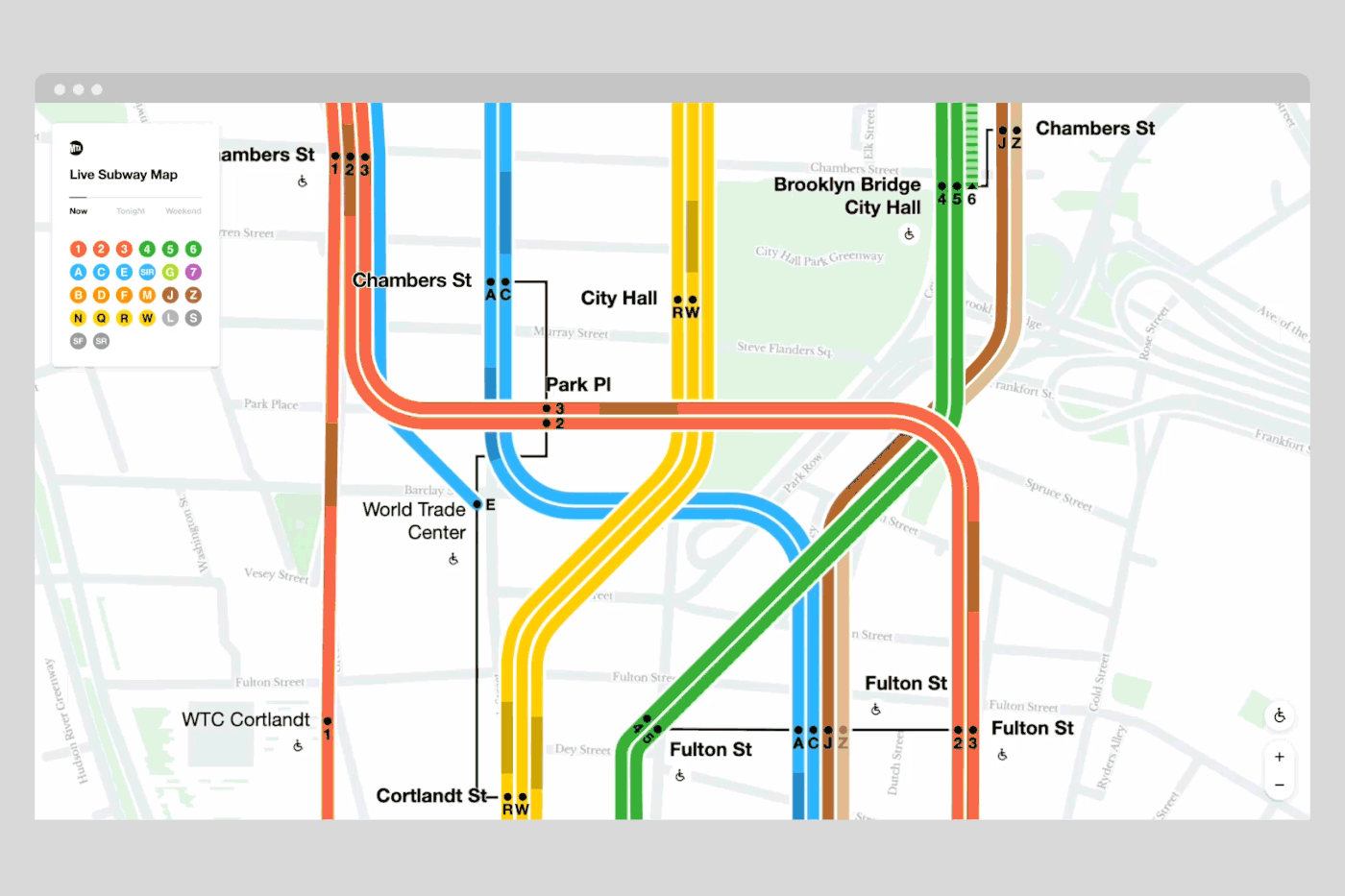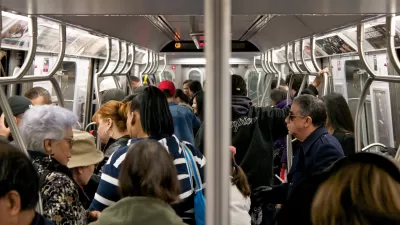There's a new chapter, and maybe an end, for the "Great Subway Map Debate."

Christopher Bonanos reports: "Today, the MTA is unveiling its new digital map, the first one that uses the agency’s own data streams to update in real time."
After giving a background on the historical precedents for the new map, Bonanos suggests that the map is perhaps the best of both worlds: a combination of the aesthetic accomplishments of the map designed by Massimo Vignelli in the early 1970s, and the more practical, user-focused approach designed by Michael Hertz Associates later the same decade.
"Vignelli’s diagram was a joy to look at and was nearly useless as an aboveground navigation tool. Hertz and Tauranac’s map functioned pretty well as a map to getting around town but inspired comparatively little delight," writes Bonanos to describe the precedent map designs.
The new map, however, is literally contemporary, writes Bonanos:
It’s so thoroughly up-to-the-moment that you can watch individual trains move around the system on your phone. Pinch your fingers on the screen, and you can zoom out to see your whole line or borough, as the lines resolve into single strands. Drag your fingers apart, and you’ll zoom in to see multiple routes in each tunnel springing out, widening into parallel bands — making visible individual service changes, closures and openings, and reroutings. Click on a station, and you can find out whether the elevators and escalators are working.
Image courtesy of the Metropolitan Transportation Authority.
The new map is a product of Work & Co, and an expert as august as Michael Beirut has declared the new map to be "legitimately revolutionary," according to Bonanos. The article includes a lot more detail about how the leadership at the New York Metropolitan Transportation Authority kicked off the project and guided the work to its revolutionary completion.
FULL STORY: First Look: New York’s Digital Subway Map Comes Alive Today

Planetizen Federal Action Tracker
A weekly monitor of how Trump’s orders and actions are impacting planners and planning in America.

Maui's Vacation Rental Debate Turns Ugly
Verbal attacks, misinformation campaigns and fistfights plague a high-stakes debate to convert thousands of vacation rentals into long-term housing.

San Francisco Suspends Traffic Calming Amidst Record Deaths
Citing “a challenging fiscal landscape,” the city will cease the program on the heels of 42 traffic deaths, including 24 pedestrians.

Defunct Pittsburgh Power Plant to Become Residential Tower
A decommissioned steam heat plant will be redeveloped into almost 100 affordable housing units.

Trump Prompts Restructuring of Transportation Research Board in “Unprecedented Overreach”
The TRB has eliminated more than half of its committees including those focused on climate, equity, and cities.

Amtrak Rolls Out New Orleans to Alabama “Mardi Gras” Train
The new service will operate morning and evening departures between Mobile and New Orleans.
Urban Design for Planners 1: Software Tools
This six-course series explores essential urban design concepts using open source software and equips planners with the tools they need to participate fully in the urban design process.
Planning for Universal Design
Learn the tools for implementing Universal Design in planning regulations.
Heyer Gruel & Associates PA
JM Goldson LLC
Custer County Colorado
City of Camden Redevelopment Agency
City of Astoria
Transportation Research & Education Center (TREC) at Portland State University
Jefferson Parish Government
Camden Redevelopment Agency
City of Claremont






























